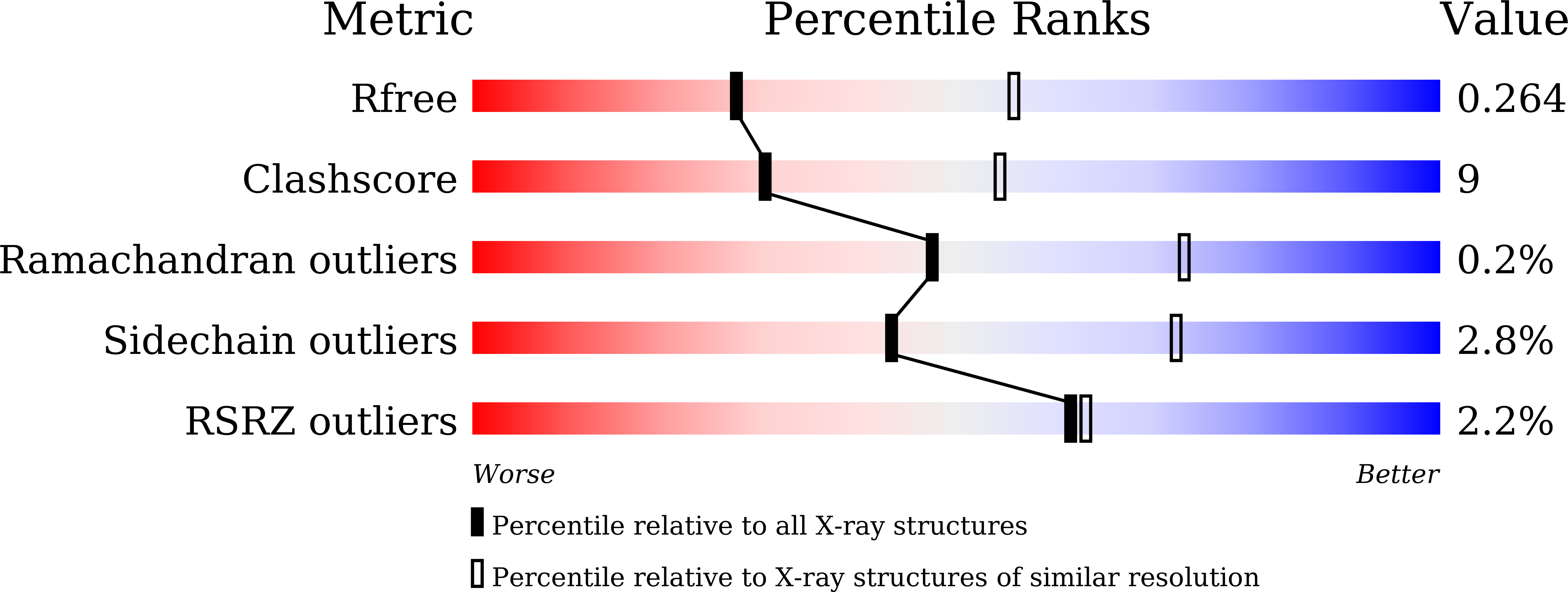Crystal structure of SARS-CoV-2 nsp10 bound to nsp14-ExoN domain reveals an exoribonuclease with both structural and functional integrity.
Lin, S., Chen, H., Chen, Z., Yang, F., Ye, F., Zheng, Y., Yang, J., Lin, X., Sun, H., Wang, L., Wen, A., Dong, H., Xiao, Q., Deng, D., Cao, Y., Lu, G.(2021) Nucleic Acids Res 49: 5382-5392
- PubMed: 33956156
- DOI: https://doi.org/10.1093/nar/gkab320
- Primary Citation of Related Structures:
7DIY - PubMed Abstract:
The emergence of SARS-CoV-2 infection has posed unprecedented threat to global public health. The virus-encoded non-structural protein 14 (nsp14) is a bi-functional enzyme consisting of an exoribonuclease (ExoN) domain and a methyltransferase (MTase) domain and plays a pivotal role in viral replication. Here, we report the structure of SARS-CoV-2 nsp14-ExoN domain bound to its co-factor nsp10 and show that, compared to the SARS-CoV nsp10/nsp14-full-length complex, SARS-CoV-2 nsp14-ExoN retains an integral exoribonuclease fold and preserves an active configuration in the catalytic center. Analysis of the nsp10/nsp14-ExoN interface reveals a footprint in nsp10 extensively overlapping with that observed in the nsp10/nsp16 structure. A marked difference in the co-factor when engaging nsp14 and nsp16 lies in helix-α1', which is further experimentally ascertained to be involved in nsp14-binding but not in nsp16-engagement. Finally, we also show that nsp10/nsp14-ExoN is enzymatically active despite the absence of nsp14-MTase domain. These data demonstrate that SARS-CoV-2 nsp10/nsp14-ExoN functions as an exoribonuclease with both structural and functional integrity.
Organizational Affiliation:
West China Hospital Emergency Department (WCHED), State Key Laboratory of Biotherapy and Cancer Center, West China Hospital and Collaborative Innovation Center of Biotherapy, Sichuan University, Chengdu, Sichuan 610041, China.





















